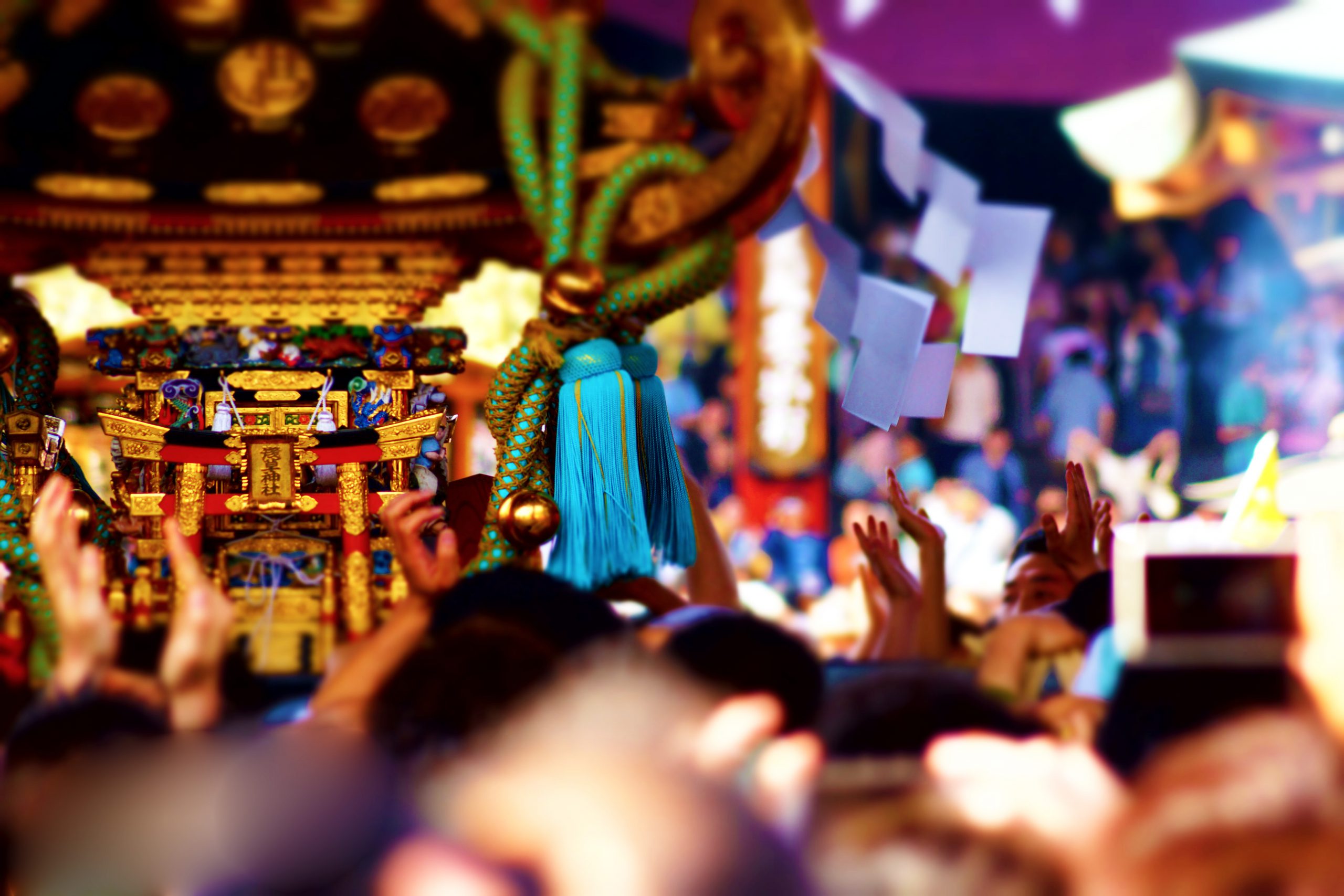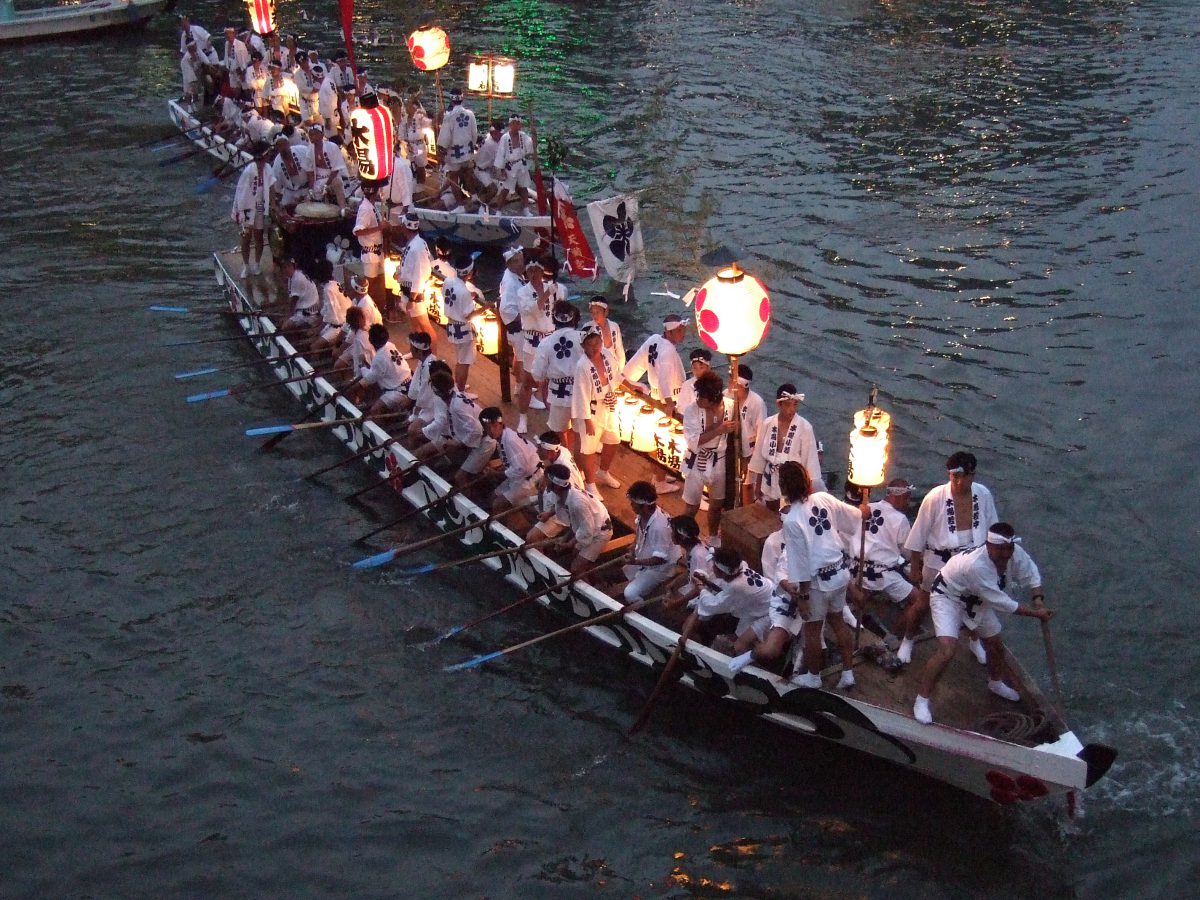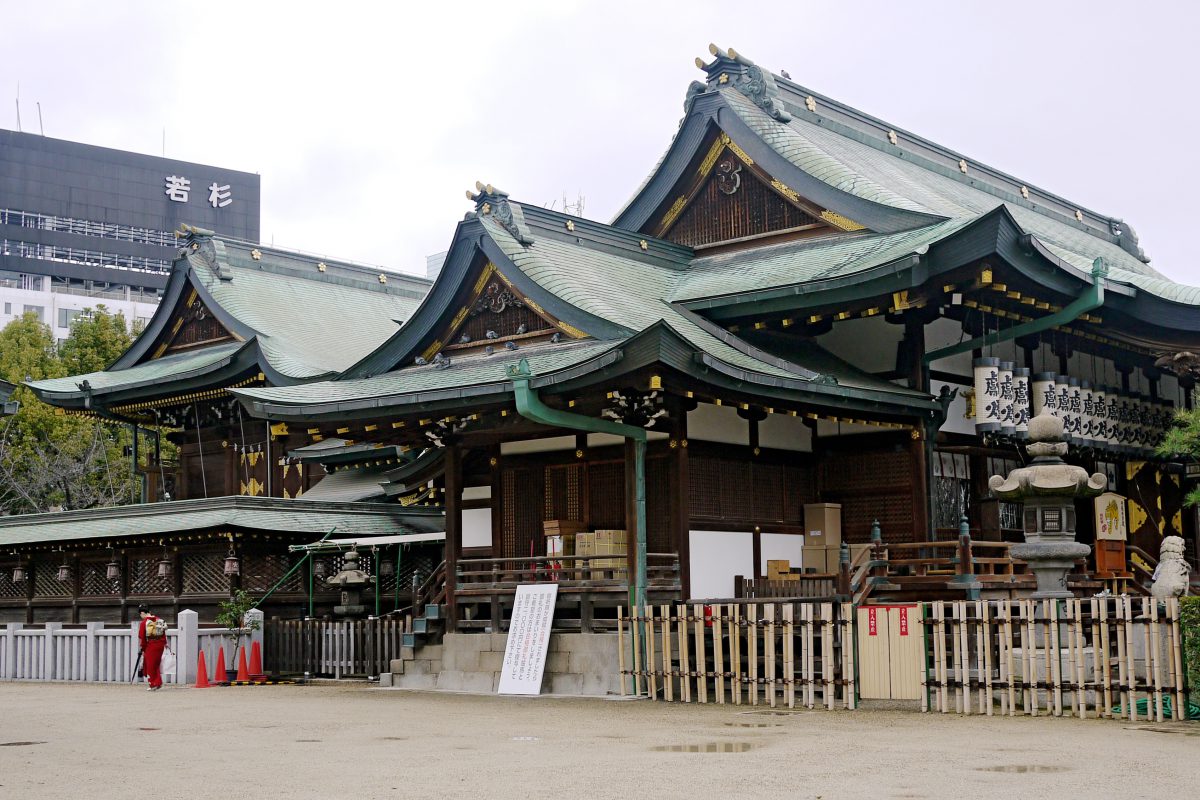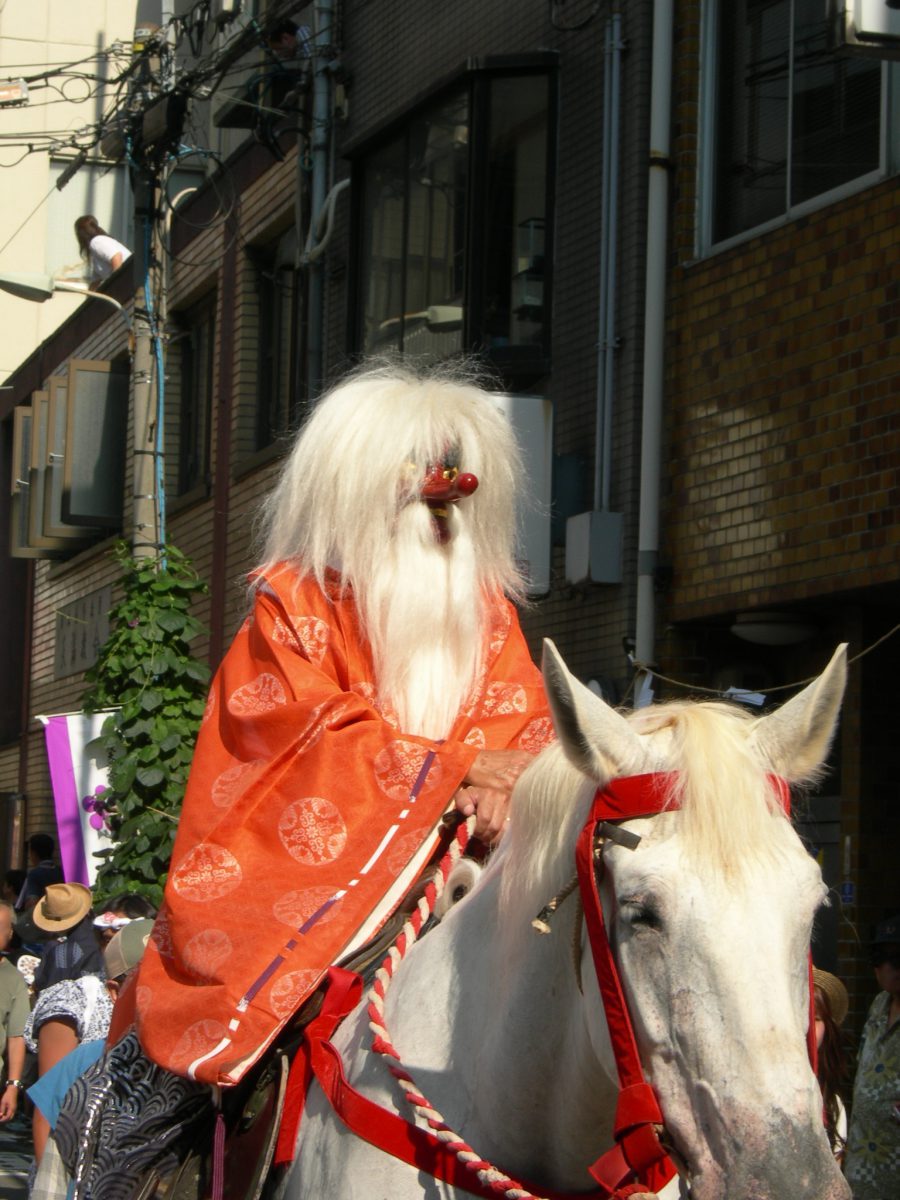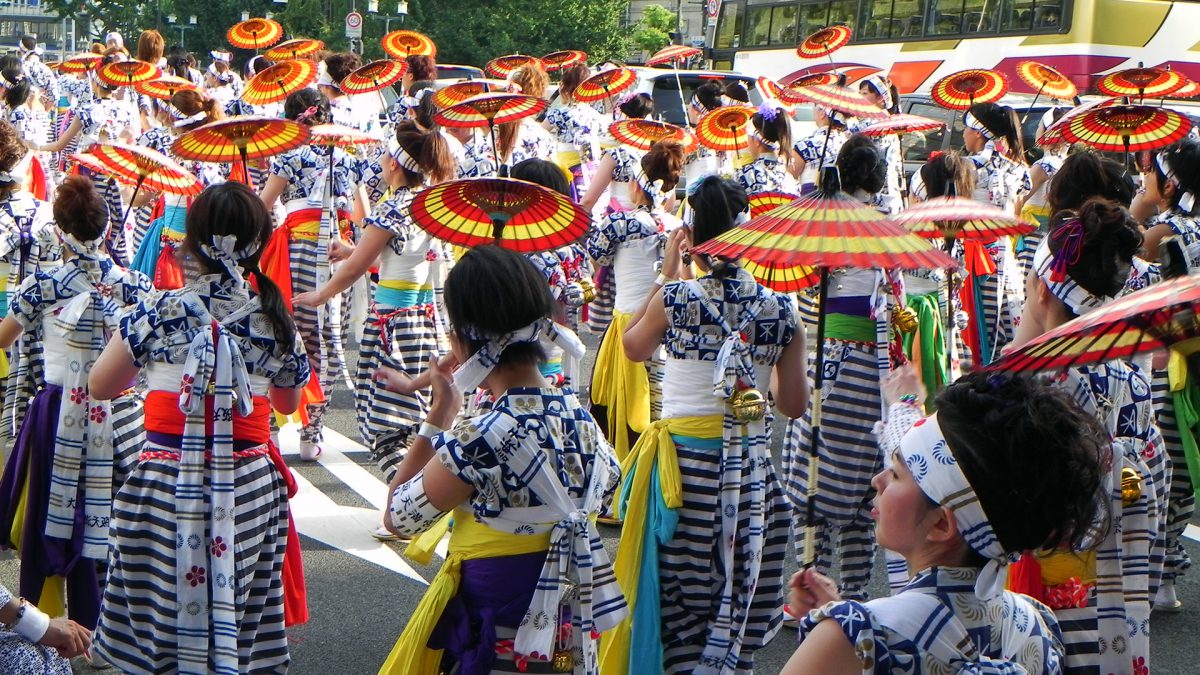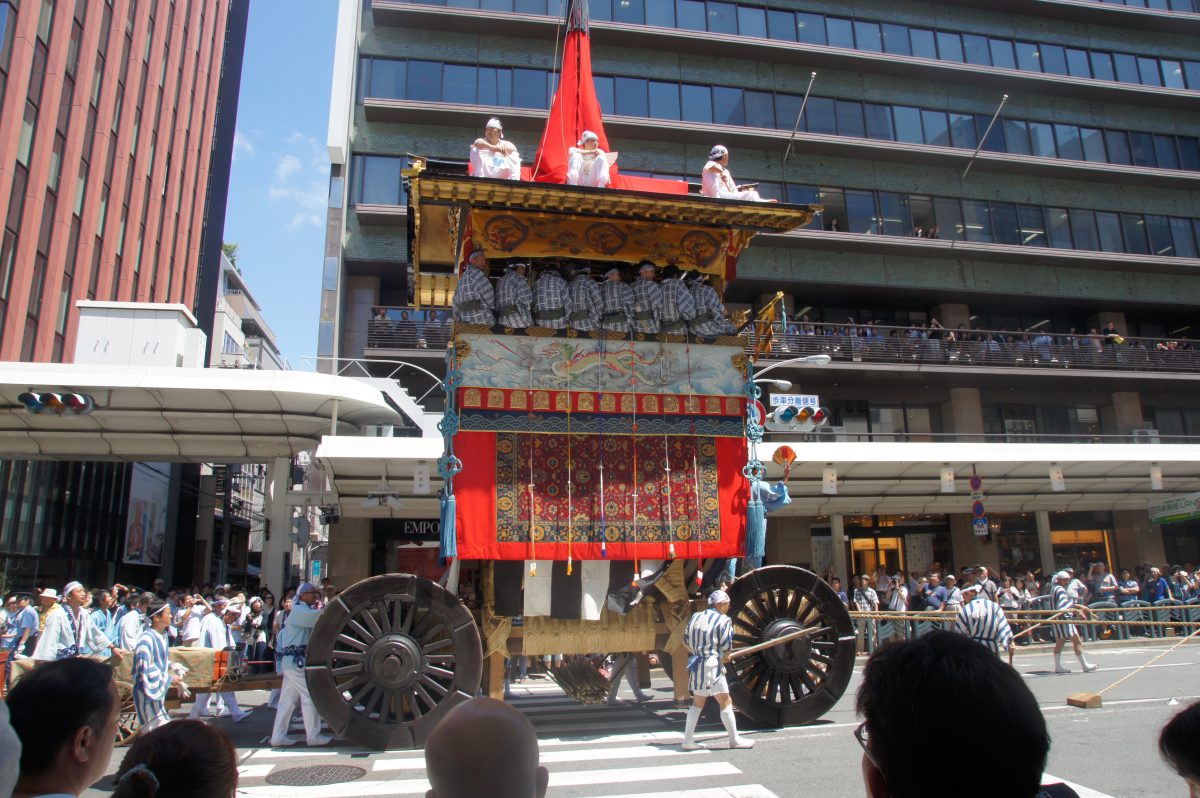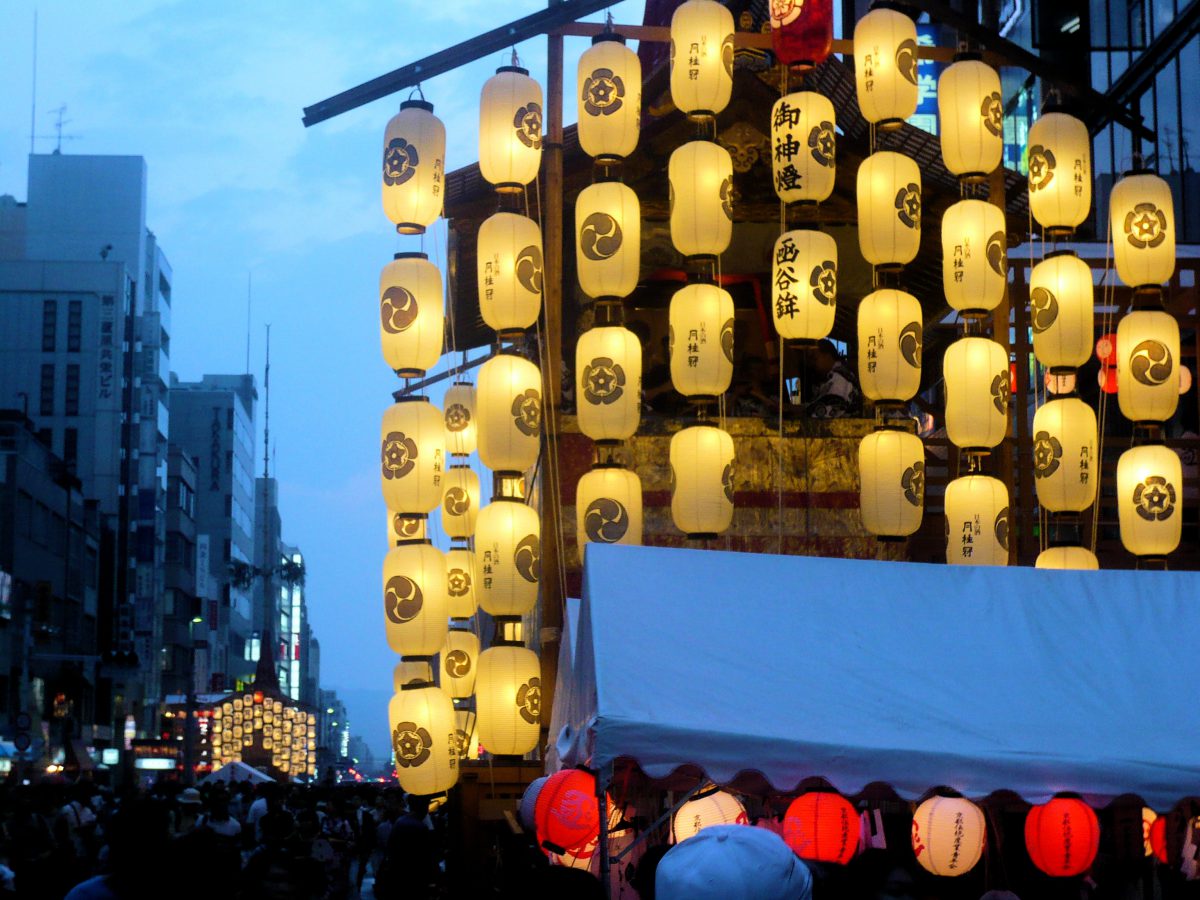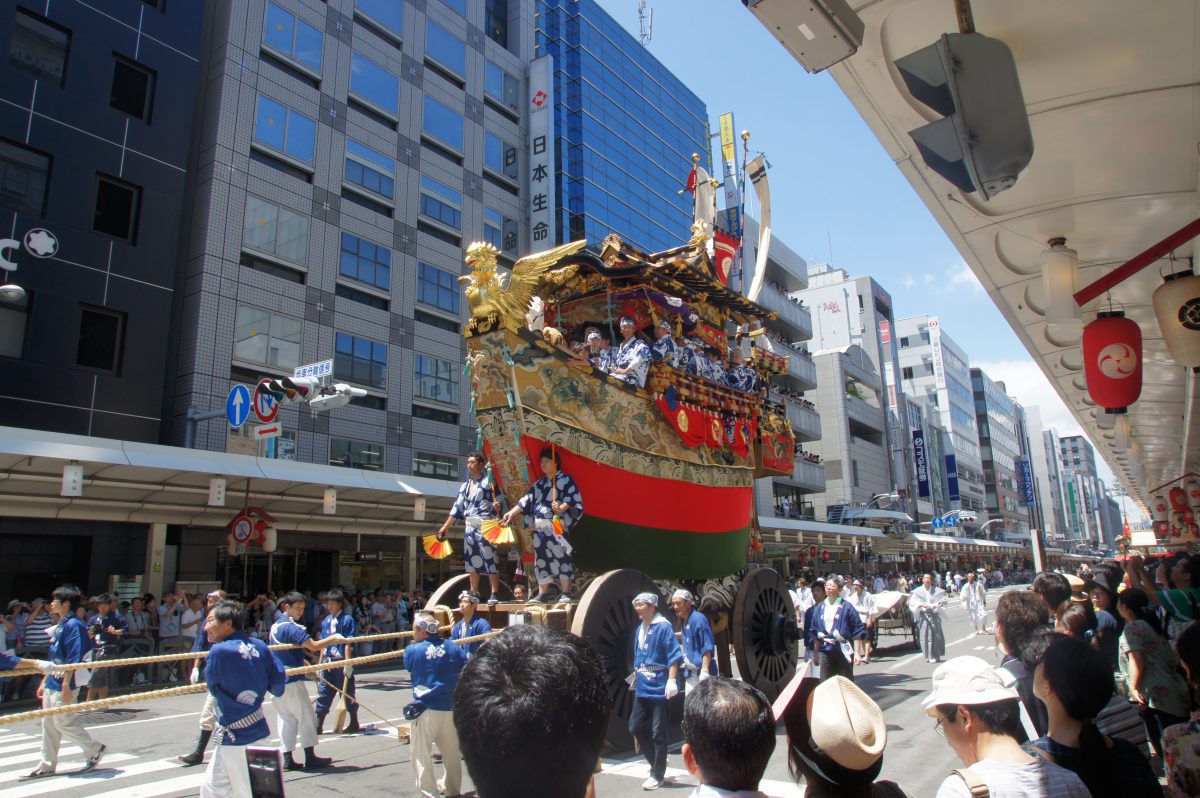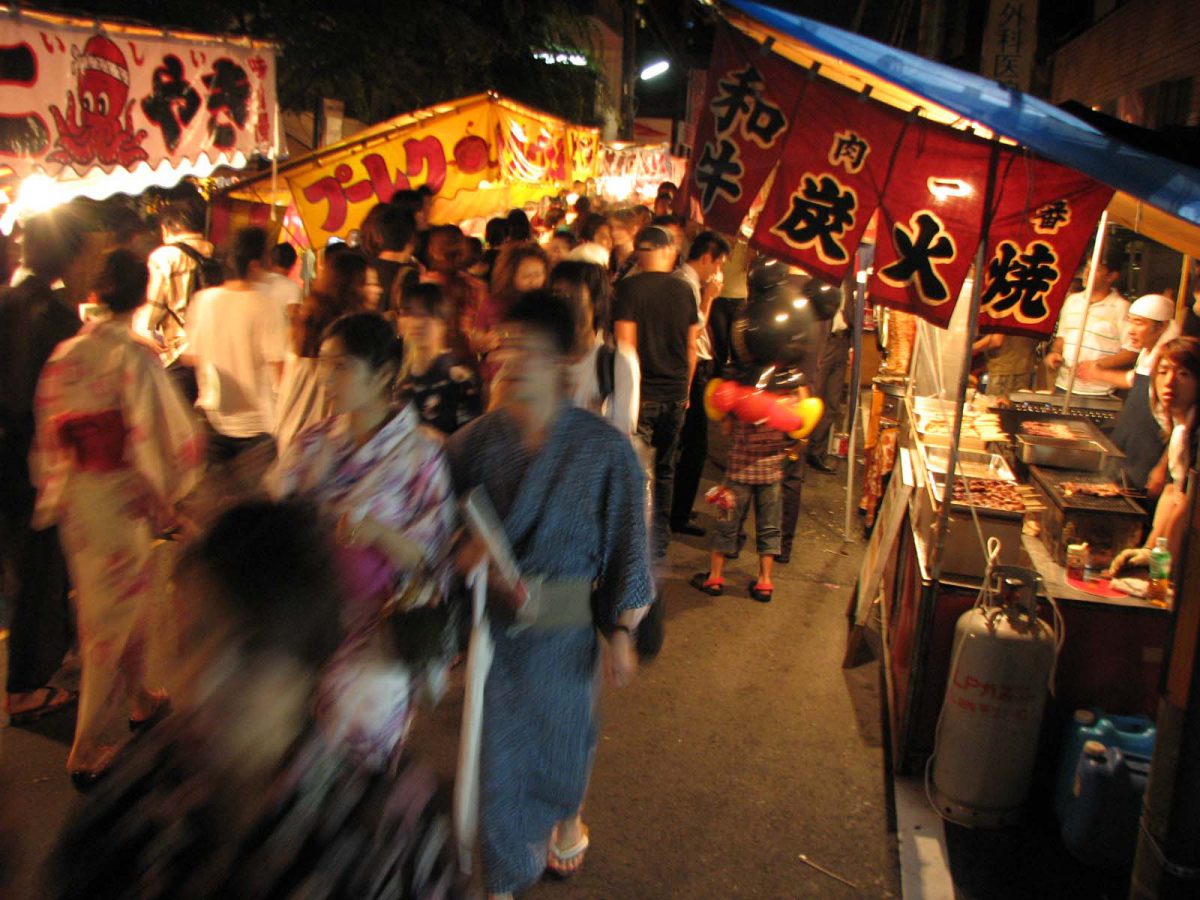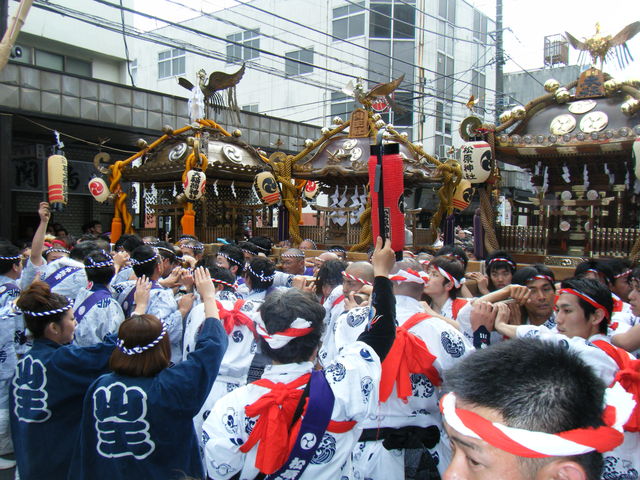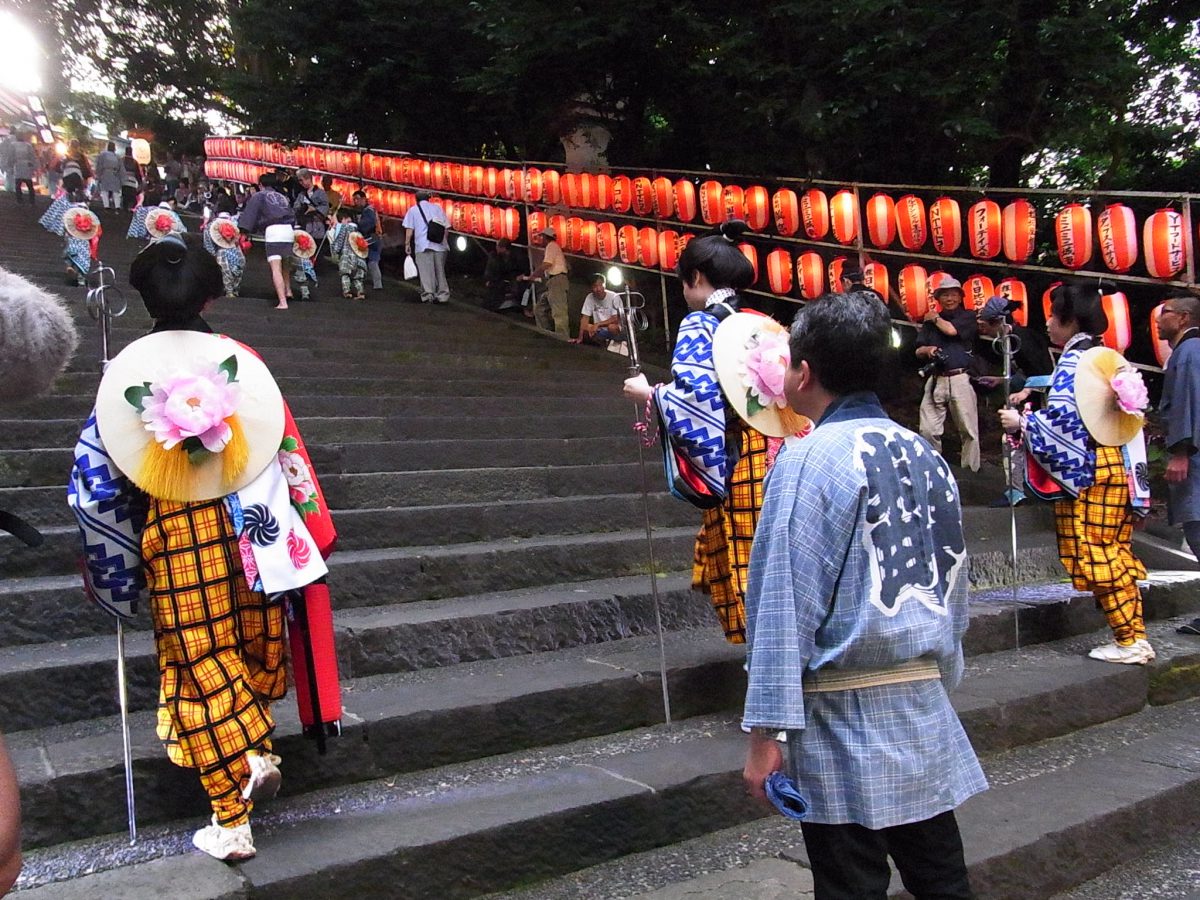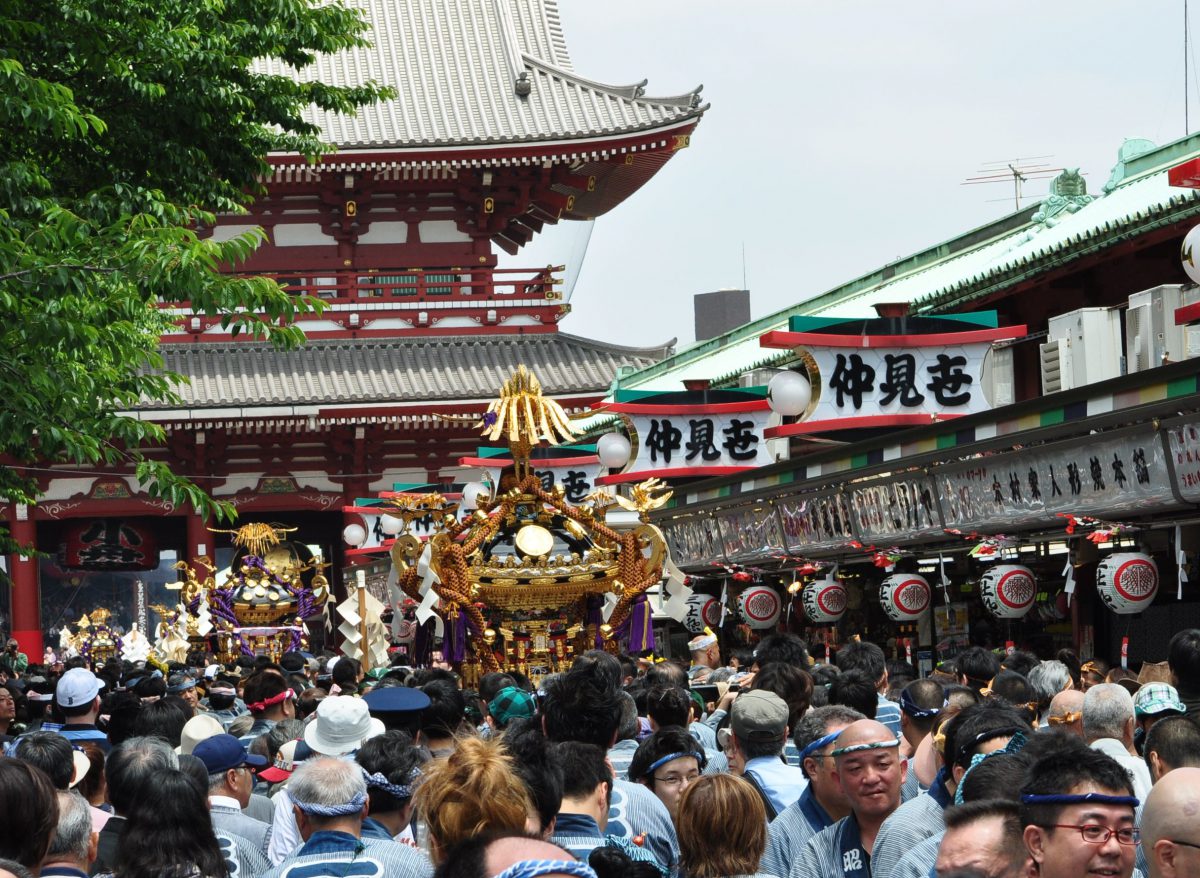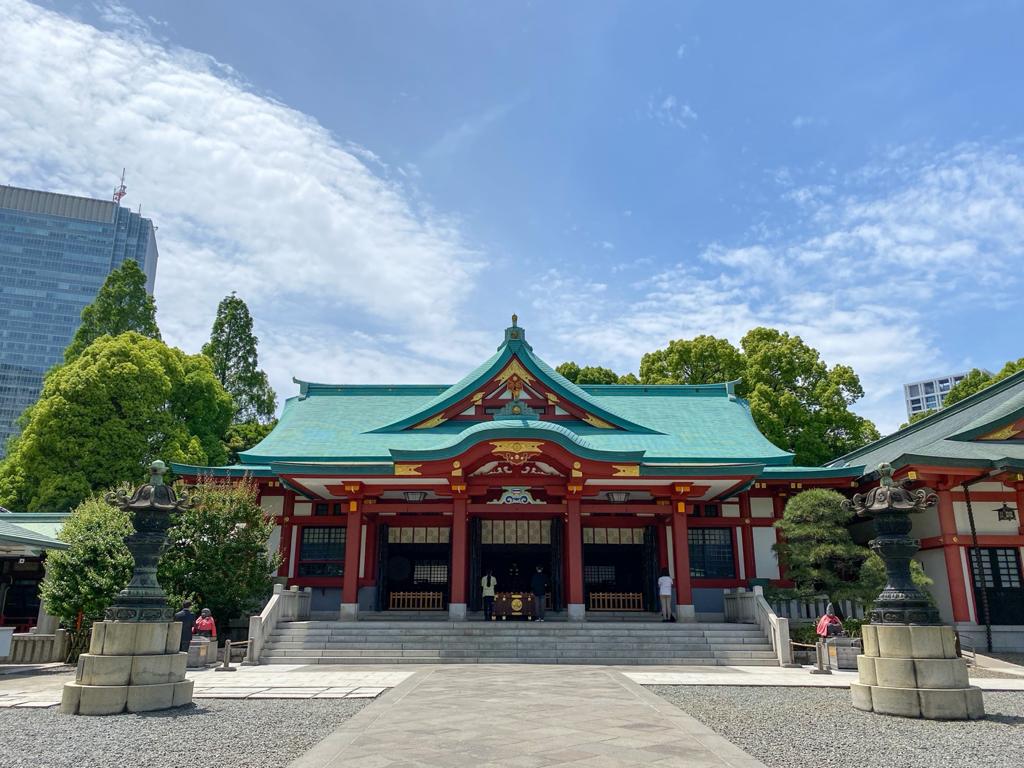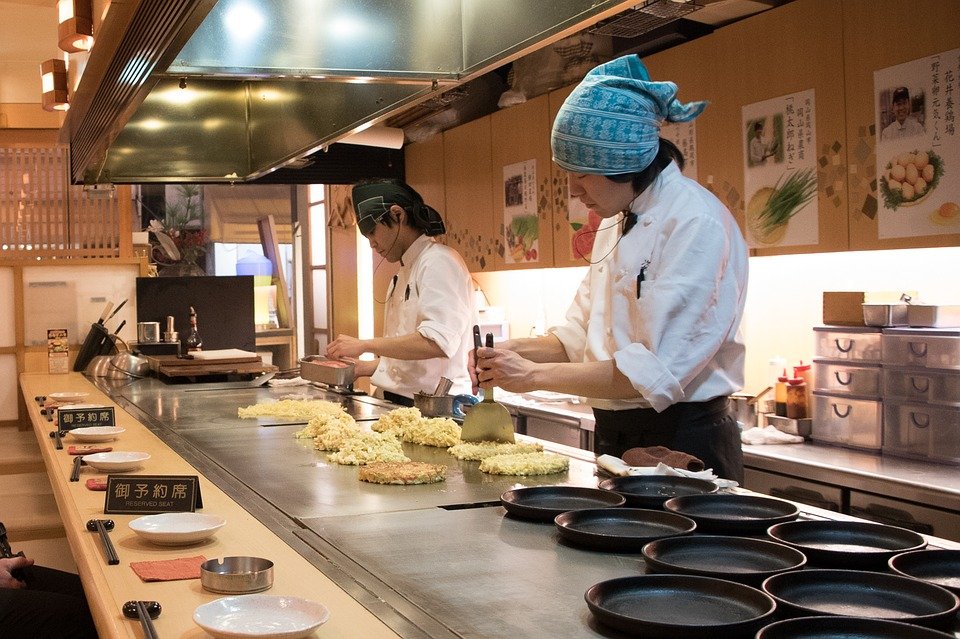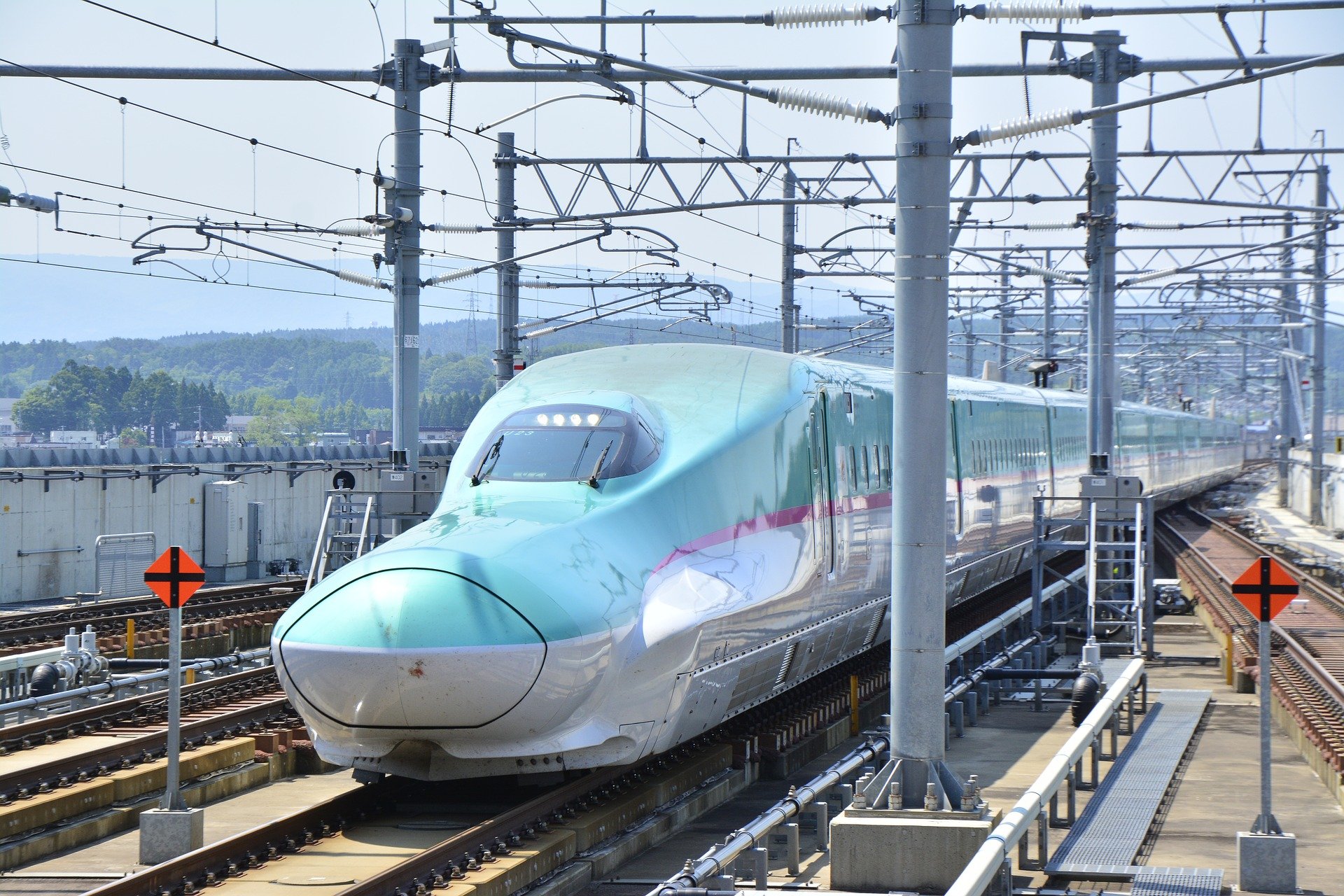Because its culture dates back so long, Japan has many holidays, festivals, and rituals, including both local and national events. You may run into a crowd at a shrine or see groups of people dancing and not know what’s going on. However, don’t be nervous – Japanese people are not overly officious about events or ceremonies, and you are welcome to watch without offending anyone so long as you show respect for the culture. Beyond small events, there are major festivals, or matsuri, that take place at different times of year. The biggest of these are known to all Japanese, and are held in major cities. If you’re going to be in one of these cities during festival time, be prepared for big crowds and traffic. And if you have the opportunity, we definitely recommend arranging your trip so you can take part in these events, or arrange a private tour so you don’t miss out. Here’s a quick rundown of the three major festivals of Japan and how you can enjoy them:
1. Tenjin Matsuri, Osaka
The festival begins at the Tenmangu Shrine, founded in the year 949 and located not far from Osaka station, and continues to the river nearby. First celebrated in the 10th century, the “festival of the gods” is meant to honor Sugawara Michizane, a scholar worshiped as the Shinto god of learning. Since then, the festival takes place every summer on the anniversary of his death; on July 24 and 25.

Midori, CC BY-SA 3.0, via Wikimedia Commons 
663highland, CC BY-SA 3.0 via Wikimedia Commons
Highlights of Tenjin Matsuri
The first day of the festival, Yomiya, begins with a ritual at Tenmangu Shrine. Afterward, prayers are said at the river, asking for safety and prosperity for the people of Osaka, and a sacred piece of wood called a kamihoko is thrown into the river. Later in the day, drums are played by men in tall red hats and a ceremonial dance is performed.
On the second day, Honmiya, at 3:30 in the afternoon, the drummers lead a procession from the shrine through the streets of the city. The procession includes a ceremonial float, music, dancers, and costumed characters like Sarutahiko, a demon on a horse (see picture below).
The mikoshi, a portable version of the shrine covered in gold and containing the spirit of the shrine’s deity, follows a boy and girl leading a sacred ox. At the river, traditional bunraku performances are put on as those in the procession board 100 boats on the Okawa River, where a fireworks show takes place.


Tomi Mäkitalo, CC BY-SA 3.0, via Wikimedia Commons 
Tomi Mäkitalo, CC BY-SA 3.0, via Wikimedia Commons
How to take part in Tenjin Matsuri
Because this is a major festival, there will be a lot of people present, especially on the 25th. You can follow the crowd and take in the performances on the Okawa River, as well as visit the food stalls. If you can get a spot on a bridge, it’s a good vantage point. If you really want to immerse yourself in the festival, consider booking a private tour that can help you see the best parts of it. If you’re only able to stop by for a bit, just mill about and take in the wondrous sights of the fireworks over the boats on the river.
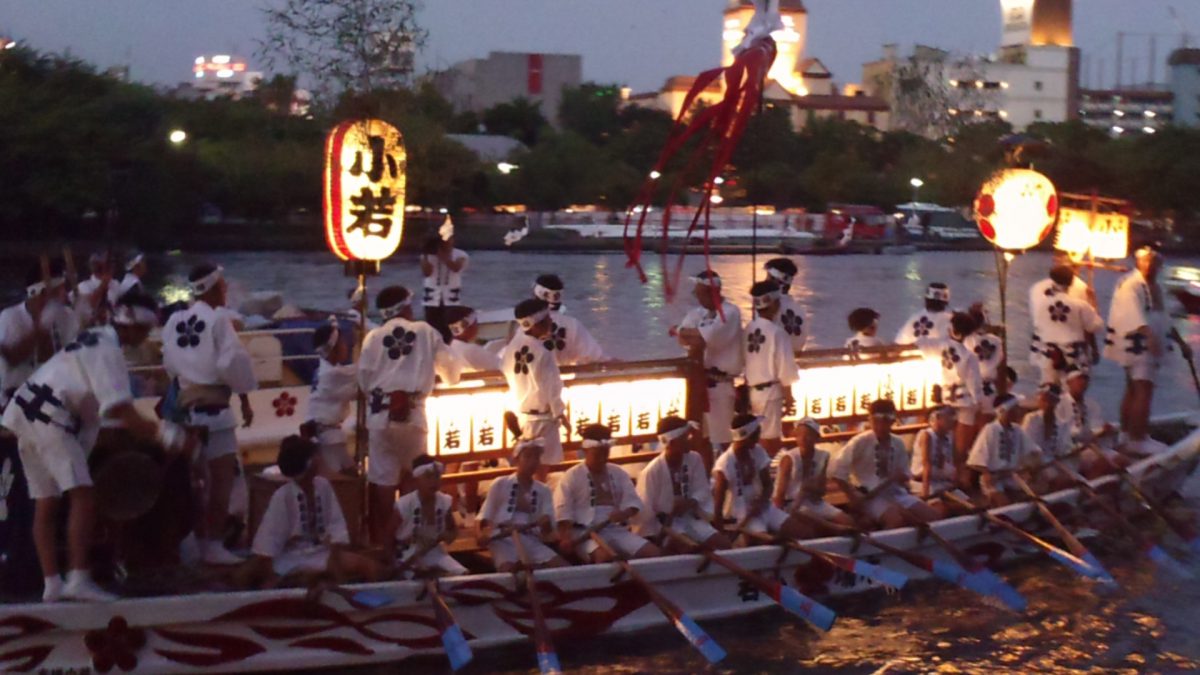
2. Gion Matsuri, Kyoto
Gion Matsuri is the most famous festival in Japan. The original festival was in 869, when observers prayed for deliverance from a widespread epidemic. It became an annual event in 970, and is the festival of the Yasaka Shrine. The Gion Matsuri is held every year during the month of July. There are events throughout the month, with the most important being the processions on the 17th and 24th. The festival takes place in Kyoto, specifically in the Gion district, which is known for traditional tea houses and Maiko. However, the main events, see below, are held on the opposite side of Kamo River.
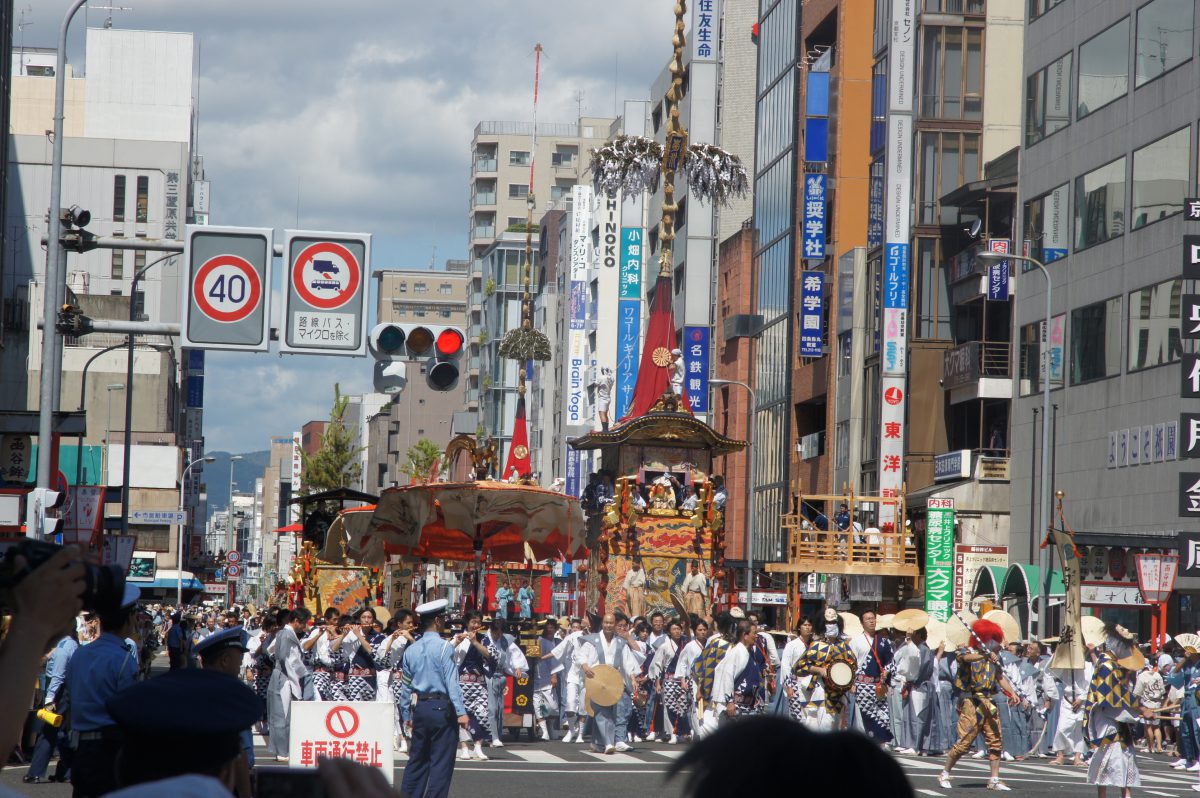
Highlights of Gion Matsuri
The festival has many events throughout the month. These include:
- July 10: The festival kicks off with a lantern reception, featuring women and children in costume, singing, and dancing. The mikoshi are transported to a temporary location and are purified in river water by local priests.
- July 10-14: Floats for the parade are constructed, one for each prefecture in Japan.
- July 13: Every year, a chigo, or “sacred child,” is chosen and visits the shrine to pray for the success of the event. Until the parade on the 17th, he is carried everywhere he goes so his feet do not touch the ground.
- July 14-16: These three nights are known as yoiyama, where visitors head to the Shijo-Karasuma district and pack the streets. There are food stalls, music, and the parade floats are put on display. There is also the Byobu Matsuri, or Folding Screen Festival, where visitors can view valuable works of art in private homes.

born 1945, CC BY 2.0,, via Wikimedia Commons 
Z3144228 / CC BY-SA 4.0, via Wikimedia Commons
- July 16: On the final night of yoiyama, sacred dances are performed at the Yasaka Shrine.
- July 17: The first float procession begins as the chigo cuts a ceremonial rope. The intricate floats are paraded through a 3 km route. In the evening, the mikoshi are carried through several neighborhoods on the shoulders of local men.
- July 21-23: These three nights are again yoiyama, where festival-goers fill the streets at night and enjoy music and food.
- July 24: Since there are so many floats, not all of them take part in the July 17 parade. The remaining floats take their trip through the town on the 24th. There is also the Hanagasa Junko, or flower umbrella procession, where ten colorful floats are walked across the river, accompanied by more than 1,000 people, followed by a series of dance performances. The mikoshi is again carried through the streets at night until it is finally returned to the shrine.
- July 30: The closing ritual is performed at the shrine, and visitors can pass through the sacred reed ring.

DocChewbacca, CC BY-SA 2.0, via Wikimedia Commons
Z3144228, CC BY-SA 4.0, via Wikimedia Commons 
Mind meal , CC BY 2.0, via Wikimedia Commons
How to take part in Gion Matsuri
If you’re in Kyoto at any point during July, it will be hard to avoid seeing some of the festivities. Head down to the streets and check out the parades, try some local food from the stalls, and enjoy the music! As always, a private tour of Kyoto can take you to meaningful sites so you can learn the history and importance of these events.
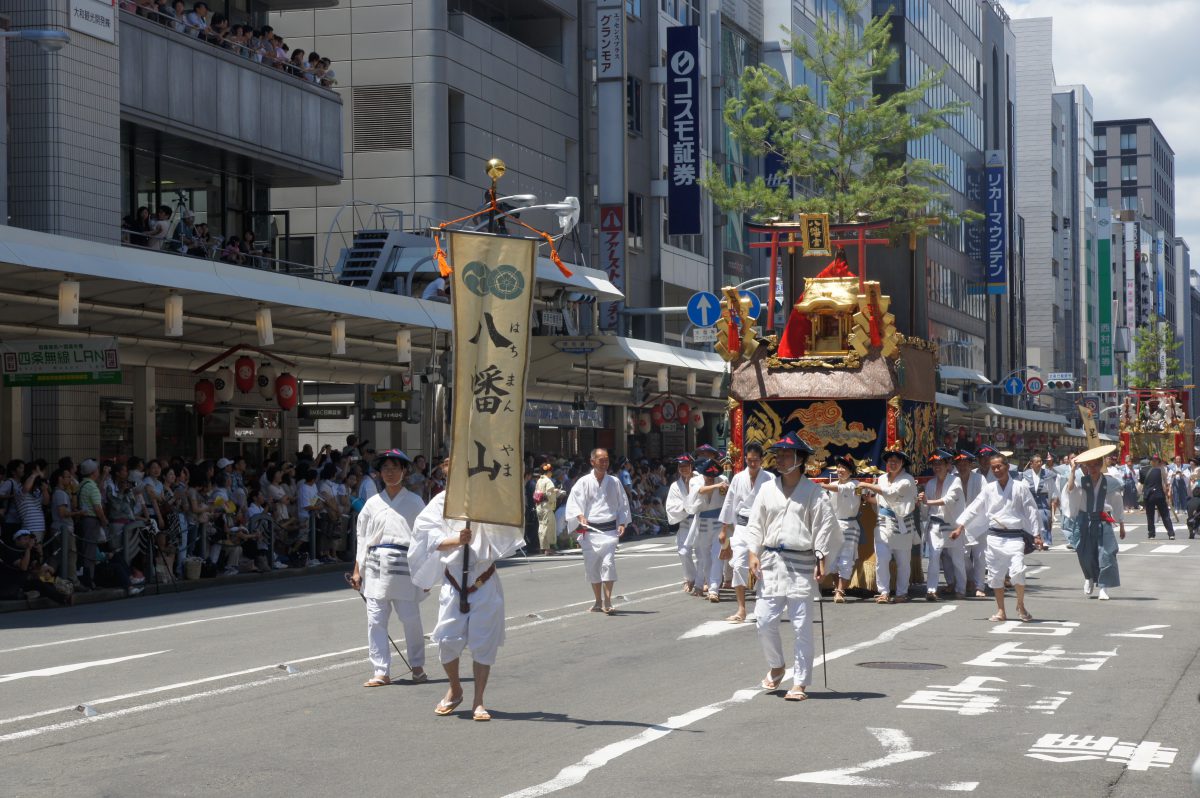
3. Sanno Matsuri, Tokyo
Number three on the list, Sanno Matsuri, is also one of the three most famous festivals of Tokyo along with Fukagawa Matsuri and Kanda Matsuri. It is held in Tokyo, beginning and ending at the Hie Shrine near Akasaka Station and lasts for 11 days. There is so much to see and do that you can easily attend the festival every day and see something new. The festival is held annually in June, with certain aspects only held in even-numbered years. The history of the festival dates back to the Edo Period (1603-1867), while the Hie Shrine is believed to predate the founding of the city of Tokyo.

Sisonori999 /, CC BY-SA 3.0, via Wikimedia Commons 
江戸村のとくぞう (Edomura no Tokuzo), CC BY-SA 4.0, via Wikimedia Commons
Highlights of Sanno Matsuri
The festival has many intimate events and things to see like ikebana, or flower arrangements, dancing, food, and performances and ceremonies specifically for children. Children’s artwork is displayed at the shrine, as well.
The biggest event of the festival is the main procession. As with the other festivals, there are three mikoshi in which the spirits of deities are carried around the city. The parade involves floats and as many as 500 people in colorful costumes. Some streets are closed, with the parade stopping at the Imperial Palace, where prayers are offered to the imperial family.
The parade continues to the Nihonbashi Hie Shrine and a rest at a nearby park. Later, the procession continues to Nihonbashi Bridge, through Ginza, and ultimately returning to the Hie Shrine where it concludes.

江戸村のとくぞう (Edomura no Tokuzo) , CC BY-SA 3.0, via Wikimedia Commons
How to take part in Sanno Matsuri
At the shrine, there is a large straw ring, as in the picture below. You can walk through the ring as an act of purification. You can purchase a doll near the shrine that you rub over your body as you pass through, and it will absorb your sins from the last six months. It’s also possible to watch the parade and follow it as far as you wish to go.
Because the city is so dense and full of people, the festival has been reduced in size, and the full procession only happens every other year. If you’re visiting in an even-numbered year, it’s definitely worth checking out. But if you’re coming to Tokyo in an odd-numbered year, consider checking out the Kanda Matsuri in May. To make the most of your time, consider a private tour that can take you where you want quickly so you can relax.
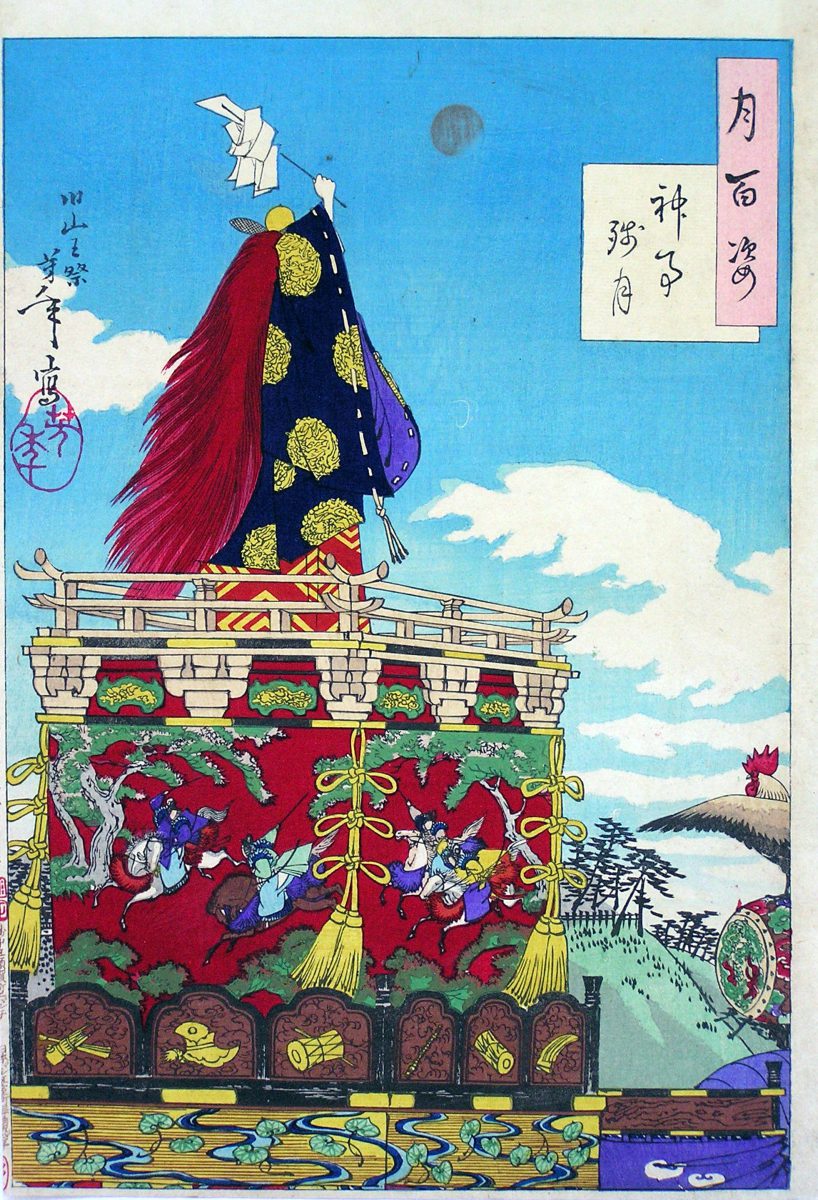
All of these festivals have food, music, dancing, and fun, which is why they are so popular. If you’re lucky enough to be in one of these cities while the festivals are taking place, we definitely recommend checking them out. If there is a special event or activity you absolutely don’t want to miss, consider working with a reservation service to set your plans before you arrive.
Follow us on Instagram, Facebook and Twitter for more travel inspiration. Or tag us to get featured!
Happy travelling!
Stay informed of the best travel tips to Japan, the most exciting things to do and see, and the top experiences to have with the Japan Wonder Travel Newsletter. Every week we will introduce you to our latest content.Subscribe to our newsletter!
Other articles you might like
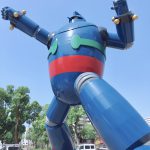
Gregg Maxwell Parker is an author and screenwriter best known for the book Troublemakers. Originally from the United States, he moved to Kobe in 2018. Gregg and his wife, Eriko, are the minds behind the blog As Seen In Japan, where they share pictures and stories from everyday Japanese life. They can be found on Twitter and Instagram.
